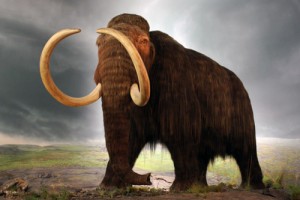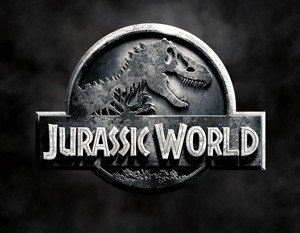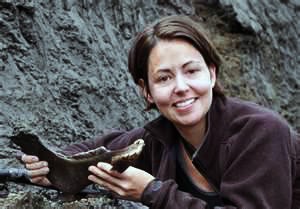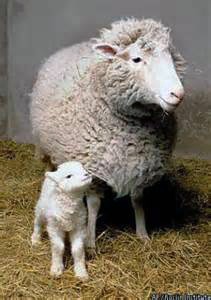 De-extinction is thought to have first appeared, as a word, in The Source of Magic (1979), a science fiction book by Piers Anthony, and caught the attention of Hollywood.
De-extinction is thought to have first appeared, as a word, in The Source of Magic (1979), a science fiction book by Piers Anthony, and caught the attention of Hollywood.
Using ancient cloned dinosaur DNA, popular ER television scriptwriter Michael Crichton then captivated the imagination of American film producer Steven Spielberg with the 1990 novel Jurassic Park, igniting the de-extinction craze.
In 2013, de-extinction was announced to be a science, at least according to journalist Ben Macintyre writing in the Times (London, March 8).
Not everyone agrees, though. “I will argue,” said Beth Shapiro of the University of California, Santa Cruz, in her new book How to Clone a Mammoth, the Science of De-Extinction, “that the present focus on bringing back particular species… is misguided” – scientifically.
The de-extinction craze is, however, infusing new energy into the turbulent post-Darwinian era as scientific discoveries are increasingly undermining Charles Darwin’s foundational tenets. For example, Darwin had argued that the rate of evolution exceeds the rate of extinction:
“The complete extinction of the species of a group is a generally slower process than their production [evolution].”
Since the publication of The Origin of Species in 1859, however, the rate of extinction has far outstripped the production rate of new species – if any. Not good news for Darwin. In fact, if biological evolution were a functional process, de-extinction should be viewed as a Darwinian anathema.
However, despite Darwin’s rhetoric, since the resurrection of ancient species is compatible with natural selection and a materialistic theory of life, the evolution industry has regained a measure of new energy with the concept of de-extinction.
Dolly 
The first genetically cloned Scottish lamb, born in 1996, Dolly, gave scientific credibility to the de-extinction craze – even though the DNA was not ancient. Dolly is “the world’s most famous sheep,” at least according to BBC News and Scientific America.
Cloned Dolly exemplified a materialist view of life. According to Danish physicist Steen Rasmussen, “Life for me is [simply] a physical process.” Italian geneticist Giuseppe Sermonti once reported that “It seemed [then] as though life could be disassembled and reassembled like a child’s blocks.”
De-extinction is no longer on the fringe. Searching with the term “de-extinction” yields over 300,000 hits.
In April 2013, National Geographic had the cover storyline: “Reviving Extinct Species, But Should We?” Carl Zimmer, in the attending leading article “Bringing Them Back to Life,” quotes Hank Greely, a leading bioethicist at Stanford University: “What intrigues me is just that it’s really cool. A saber-toothed cat? It would be neat to see one of those.”
Little Shaggy Elephant Story
However, even before Spielberg’s movie and Dolly, the pivotal event launching the de-extinction craze can be attributed to a Chicago Tribune “Little Shaggy Elephant Story” published on April 23, 1984. The story was short –
“When a species becomes extinct, we expect it to stay that way. Scientists in America and the Soviet Union have upset that seemingly safe assumption by ‘retro-breeding’ a hybrid animal that is half elephant and half woolly mammoth. The story starts in Russia, where Dr. Sverbighooze Yasmilov of the University of Irkutsk was able to extract the nuclei of egg cells taken from a young mammoth that was found frozen in Siberia. Technology Review reports that he sent the material to the Massachusetts Institute of Technology, where James Creak mixed the DNA from the cells with elephant DNA. Woolly mammoths, which roamed in Europe until they died out 10,000 years ago, have 58 chromosomes. Based on Creak’s success, Yasmilov decided to try to fuse the nuclei from the mammoth’s egg cells with sperm from an Asian elephant. The experiment produced eight fertilized eggs, which were implanted in Indian elephants. Six miscarried, but two hybrid animals – males that are probably sterile – were born. The hybrids, which some call ‘mammontelephases,’ are covered with yellow-brown hair and have jaws that are similar to the mammoths.”
The story was then circulated in more than 350 newspapers nationwide within days, launching the de-extinction craze. Beth Shapiro decries the Chicago Tribune’s handling of the article –
“Not one of the newspapers that picked up and ran the story bothered to check the facts… the whole story was a joke. The scientists did not exist. The project did not exist. The entire story was intended as a parody of science, written by a talented undergraduate student to fulfill a science writing assignment. The story was published in Technology Review in celebration of All Fools’ Day. The article, which is on page 85 of the April 1984 edition of the Technology Review, concludes with the name of the student–Diana Be-Aaron–the date April 1, 1984.”
The origins of the de-extinction craze emerged from mythology and fiction – not science. Popularity need not be scientific.
 Steven Spielberg‘s Jurassic Park movie grossed over $80 million by the end of the first week in 1993. The world’s leading movie magazine, Empire, gave the film five stars, hailing it as “quite simply one of the greatest blockbusters of all time.” The third Jurassic Park sequel, Jurassic World, is scheduled for release tomorrow. De-extinction is captivating, like mythological legends.
Steven Spielberg‘s Jurassic Park movie grossed over $80 million by the end of the first week in 1993. The world’s leading movie magazine, Empire, gave the film five stars, hailing it as “quite simply one of the greatest blockbusters of all time.” The third Jurassic Park sequel, Jurassic World, is scheduled for release tomorrow. De-extinction is captivating, like mythological legends.
In the wake of the popular momentum, research funding flowed into de-extinction projects. Dolly was not a de-extinction project using fossilized DNA to resurrect an ancient species.
Dolly’s birth at the Roslin Institute in Scotland involved a genetic transfer from a mammary gland from a live healthy ewe into a live healthy identical ewe. Dolly, however, was the only one of 277 implanted embryos that actually survived birth.
Dolly was somewhat normal, eventually giving birth to twins and then later to triplets. However, by the age of four, Dolly developed severe arthritis requiring the use of anti-inflammatory agents. While the typical lifespan of a Finn-Dorset sheep is 11 to 12 years, Dolly was euthanized at the age of six due to rapidly progressing lung cancer and debilitating arthritis.
Promotea and Snuppy
Cloning has continued to be unpredictable and precarious. The first cloned horse in 2003, Promotea, was only one of 841 embryos to develop fully.
While Snuppy, an Afghan hound, was credited in 2005 as the world’s first cloned dog, Korean scientist Hwang Woo-Suk had implanted 1,095 embryos in 123 different surrogate mothers to get Snuppy and one other pup. Only Snuppy, though, lived for more than a few weeks.
In the previous year, Time magazine named Hwang one of its “People Who Mattered 2004,” stating that Hwang “has already proven cloning is no longer science fiction, but a fact of life.”
Mammoths
Since the use of DNA from live healthy individuals has not delivered live healthy individuals, how can a live healthy individual be expected to use ancient fossilized DNA from an extinct species? Fossilized ancient genetic material is only a fragment of the species’ original DNA molecule.
Immediately after death, the DNA molecule begins decaying exponentially. DNA recovered from the fossil record, including extinct mammoths frozen in the Arctic tundra, has only a fraction of its original genetic potential.
“Extinct species are gone forever,” Shapiro (pictured) explains, “We will never create an identical clone to a mammoth,” therefore, “the present focus on bringing back particular species… is misguided.”
More importantly, the de-extinction craze highlights a perplexing fact for evolution. According to Shapiro, “There is no clear path from genomes to living things… evolution does not work in absolutes.” Darwin’s dilemma intensifies.
Even more puzzling for evolution, Shapiro’s evidence uncovered that “The huge variation in plant and animal genomes is linked neither to the complexity of the organism nor to the number of genes that are encoded by those genomes.” Clearly, from the evidence, genetics exhibits none of Darwin’s infamous “slight, successive” changes. Darwin’s dilemma intensifies.
Genesis
“Science has some catching up with the movies,” Shapiro laments. Scientific investigations into de-extinction continue to underscore a highly complex mosaic pattern of nature – evidence that is compatible with the Genesis account of creation. Evidence for a continuum of biological evolution from the simplest to complex forms has yet to be observed in nature. The initial excitement over de-extinction is fading.
Evidence from the fields of extinction and speciation, which validate the theory of evolution scientifically, remains speculative.
De-Extinction Craze is an Extinction and Speciation article.
Darwin Then and Now is an educational resource on the intersection of evolution and science, highlighting the ongoing challenges to the theory of evolution.
Explore how to understand twenty-first-century concepts of evolution further using the following links –
-
- Understanding Evolution is a journey that showcases how different investigative approaches play a pivotal role in enriching our understanding of the process, leading to diverse conclusions.
- Studying Evolution defines the terms “species” and “natural selection” and how they have changed since The Origin of Species was published in 1859.
- What Science Investigates: Charles Darwin’s approach to science and how the principles of modern science are used for different investigative purposes.
- The Evolution and Science category features articles studying how the intersection of evolution and science influences the current understanding of evolution.
- The Theory and Consensus category features articles examining how scientific findings are influencing the scientific consensus on the essential tenets of evolution, including Natural Selection.
- Glossary defines terms associated with explaining the theory of biological evolution.



